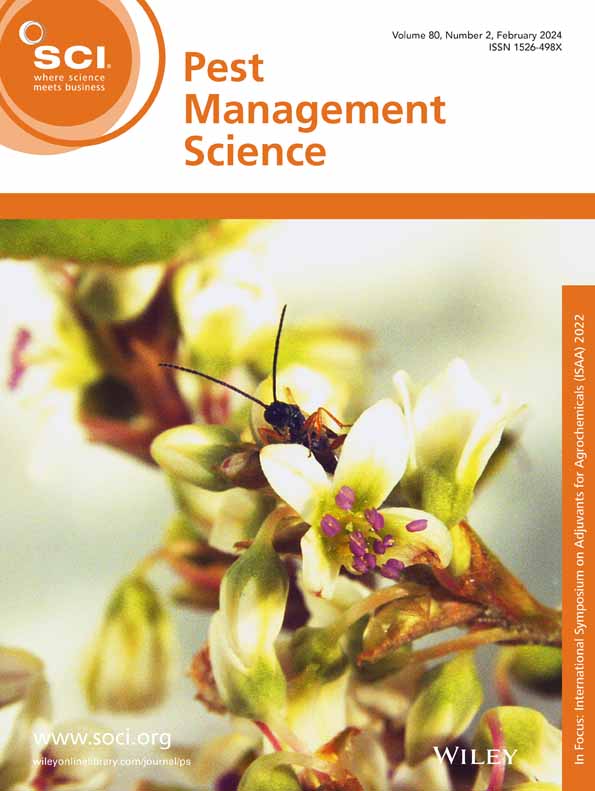Resistance risk assessment of Rhizoctonia solani to four fungicides
Abstract
BACKGROUND
Hexaconazole, thifluzamide, difenoconazole and azoxystrobin are widely used fungicides for the control of Rhizoctonia solani in China. However, few studies have assessed the sensitivity and resistance risk of R. solani to these four fungicides.
RESULTS
The sensitivities of 126 R. solani isolates to hexaconazole, thifluzamide, difenoconazole and azoxystrobin were determined, with average half maximal effective concentration (EC50) values of 0.0386, 0.0659, 0.663 and 1.508 μg mL−1, respectively. Field resistance monitoring of the four fungicides showed that the three isolates had moderate resistance to difenoconazole. Resistant mutants to the four fungicides were obtained by fungicide adaptation, and resistance could be stably inherited by most mutants. Compared with those of the parent isolates, the biological characteristics of hexaconazole-resistant mutants exhibited enhanced or similar compound fitness index (CFI), whereas most of the other mutants displayed reduced or comparable CFI. There was evidence of positive cross-resistance between hexaconazole and difenoconazole. In the presence of fungicides, the expression of the CYP51 genes in hexaconazole- and difenoconazole-resistant mutants significantly increased, the expression of SDH genes in thifluzamide-resistant mutants significantly decreased, and the expression of the Cyt b gene in azoxystrobin-resistant mutants did not significantly change.
CONCLUSION
Based on these data, we speculated that R. solani had a low-to-medium resistance risk to four fungicides. The change of target gene expression may be one of the reasons for fungicide resistance in R. solani. This study provides a theoretical basis for monitoring resistance emergence and developing resistance management strategies to control R. solani. © 2024 Society of Chemical Industry.


 求助内容:
求助内容: 应助结果提醒方式:
应助结果提醒方式:


